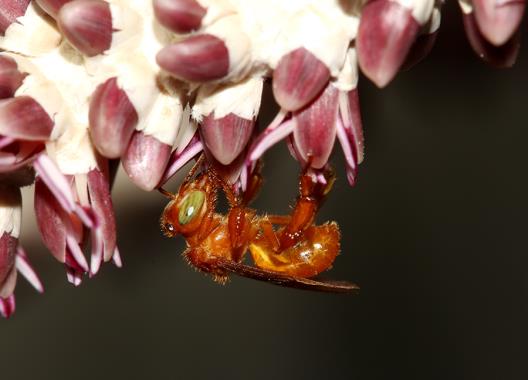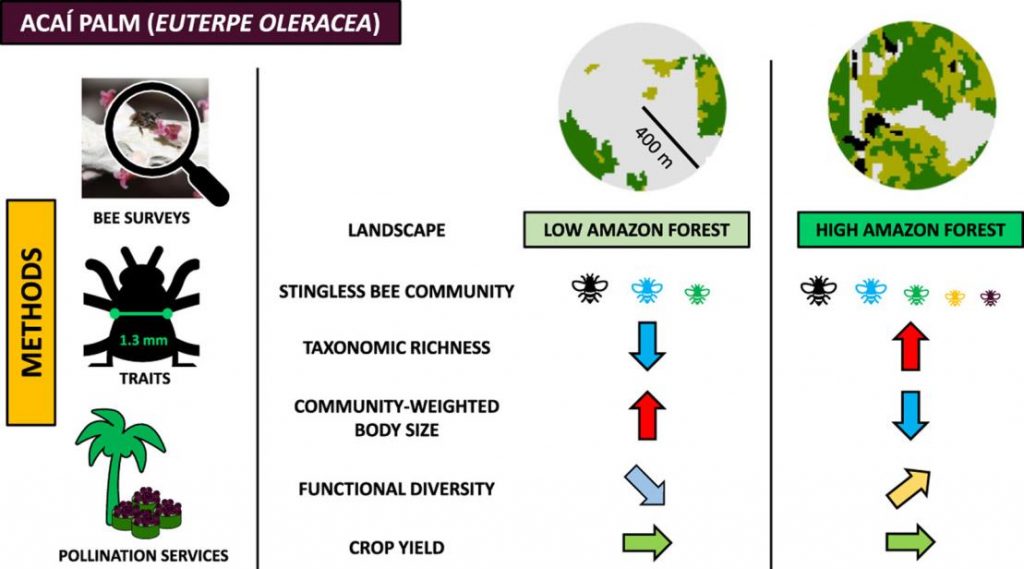When you next enjoy a bowl of açaí (acai) in your favourite café, spare a thought for the hard-working stingless bees that are essential for production of the fruits used to make the tasty and healthy pulp. Acai fruits grow on a palm tree in estuaries and flood plains of the mighty Amazon River. Acai is a species that depends on cross-pollination between male and female flowers on different palm trees. When searching for food, insects carry pollen from male to female flowers where pollination occurs. Crucial are the abundant and diverse native bees that abound in the semi-natural farming areas. More than 90% of acai pollination is carried out by native bees both social stingless (60%) and solitary (35%) bees which are more efficient in the transport of pollen than the other insects.

Giorgio Venturieri, now living in Brisbane and running Nativo stingless bee business, and colleagues showed that fruit yields could be increased by introducing hives of stingless bees, particularly in the areas close to the hives. However colonies of bees can be hard to come by, so maintaining the forest around plantations, contributing to natural pollination, is still the best option for the producer.
Alistair Campbell, Elinor M. Lichtenberg and colleagues have been extending our understanding of this system. Recently they studied the effects of land use change on stingless bee communities and their pollination services to acai palm in the Amazon. They compared traits of stingless bees visiting acai inflorescences across a land use intensity gradient (low to high forest cover) and showed that large tracts of minimally disturbed tropical rainforest are vital for the conservation of diverse stingless bee communities.
There is high functional diversity (that is, many species fill the same ecological role) in stingless bee communities in these forests. This diversity buffers acai pollination services to loss of sensitive bee species. Thus, conservation strategies must focus on protecting wider biodiversity, not just ecosystem services, to guarantee conservation of native stingless bee taxa. Doing so will safeguard crop pollination services, the pollination of native plant communities, and the long-term resilience of Amazon forest ecosystems.
Photo: Cristiano Menezes
Citation: Alistair Campbell, et al. (2022) High bee functional diversity buffers crop pollination services against Amazon deforestation. Agriculture, Ecosystems & Environment Volume 326, 107777, https://doi.org/10.1016/j.agee.2021.107777

